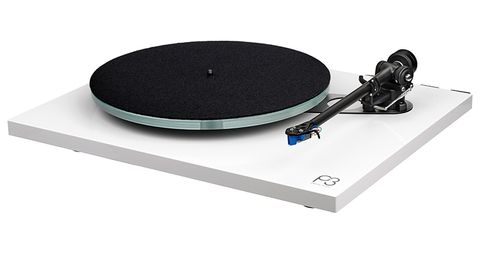The 1970s were known as the “Golden Age of Vinyl,” and Sony played a key role in establishing it. Although belt-driven British superdecks like Linn’s Sondek and Dunlop’s Systemdek dominated the specialist audiophile market, the larger turntable world was dominated by quartz-locked, direct drives from Japan with high levels of automation. Sony, like every other major manufacturer, offered goods ranging in price from entry-level to high-end…
In 1978, the Japanese behemoth introduced a new line of turntables that looked very futuristic at the time and were larger-than-average at 445x145x400mm (with plinth and dustcover). The £180 ‘PS-X40 Stereo Turntable System’ was practically the ‘entry level high end’ model, providing excellent measured performance at a – just about – reasonable price. It went completely unnoticed by the UK audiophile press; Sony turntables were viewed as little more than range fillers by those in the know – the kind of item you’d buy at your local Sony Centre to ‘fill in the gaps’ in a matching Sony system. However, the PS-X40 turned out to be better than predicted.
In reality, this is not a wonderful turntable, but it is still a competent one that may provide a pleasant sound when used with a good cartridge. It has a slew of useful technologies that has been thoughtfully implemented. Although the PS-slightly X40’s plasticky plinth appears to be a letdown – Technics did better in this market segment, using aluminium and rubber construction – the PS-base X40’s turns out to be made of Sony Bulk Molded Compound, giving the deck an overall weight of 8kg and a general feeling of quality.
The brushless Slotless Linear motor from Sony is installed, along with a smart Magnedisc-controlled quartz lock. It reads magnetic pulses inscribed into the ferric material deposited there with an 8-pole monitoring head positioned on the inside of the outside rim of the 2.2kg, 320mm aluminium alloy diecast platter. This sends the information to the servo, which adjusts the power to the DC motor in order to keep the platter spinning at the right speed. This results in a vanishingly low 0.025 percent wow and flutter figure, nearly half that of the more expensive Linn LP12. The deck incorporates quick-stop electromagnetic brakes in addition to spinning the platter up to full speed in half a turn. It has an illuminated stroboscope, as does every Japanese direct drive of the era – here recessed and behind a window – but it is unusual in that it does not have variable speed.
The PUA-7 static-balanced, J-shaped pickup arm is built of 10mm diameter high tensile aluminium tubing, which has eight times the structural stiffness of Sony’s traditional armtubes. The PS-version X40’s is obviously cheaper and doesn’t have VTA adjustability, but it’s still a high-quality item that sits on a cast zinc alloy arm base. It has an effective length of 216.5mm, a 16.5mm overhang, a cartridge weight range of 12 to 19g (including headshell), and a headshell weight of 10.5g. It boasts high-quality bearings and is a joy to cue with your hands. There’s also a headshell holder built in, so you can keep a backup cartridge on hand and utilize it for things like parties.
Of course, as a mid-priced Japanese deck from the late 1970s, it boasts complete automation. This includes feather-touch controls, a repeat function, and a front-mounted damped lift/lower control, all of which were inconceivable to any vinyl user just a few years ago. Its primary defense against ground-borne acoustic feedback is the fluid-filled feet, so location is critical, and its claimed signal-to-noise ratio is 73dB, which is outstanding for 1978. Overall, the PS-X40 is a well-made product, although not nearly as well-made as the Technics SL-1200.
This Sony is surprisingly good in terms of sound quality, as long as you keep it free from airborne and ground-borne vibrations, use a good cartridge, and remove the dustcover before playing. It boasts a powerful yet supple bass that extends up to a clean and open midband with a broad soundstage and silky treble, though not quite as gutsy as the Technics. In terms of depth perspective, it’s a touch two-dimensional, but it still sounds pretty spacious overall. It’s seriously good in terms of rhythm, if not quite as ‘get-up-and-go’ as the Technics; the music has a grasp and focus that’s surprising for a mid-priced automated turntable. The PS-X40 has a slightly bright tone to it, but it’s far from harsh. It’s a more musically gratifying performer than you may expect.
There are still a handful circulating today, with a decent example fetching upwards of £250 — excellent value if well preserved. Although not Sony’s crowning achievement, this unassuming middle-of-the-range deck is amazing even by today’s standards, and demonstrates how unrivalled the company’s goods were at the time. By 1981, the PS-X40 and the rest of the line had been phased out and replaced by a flimsier, smaller line of vinyl spinners that were clearly lower-cost by comparison — signaling the beginning of Sony’s exit from the serious turntable market, which it has never returned to.






